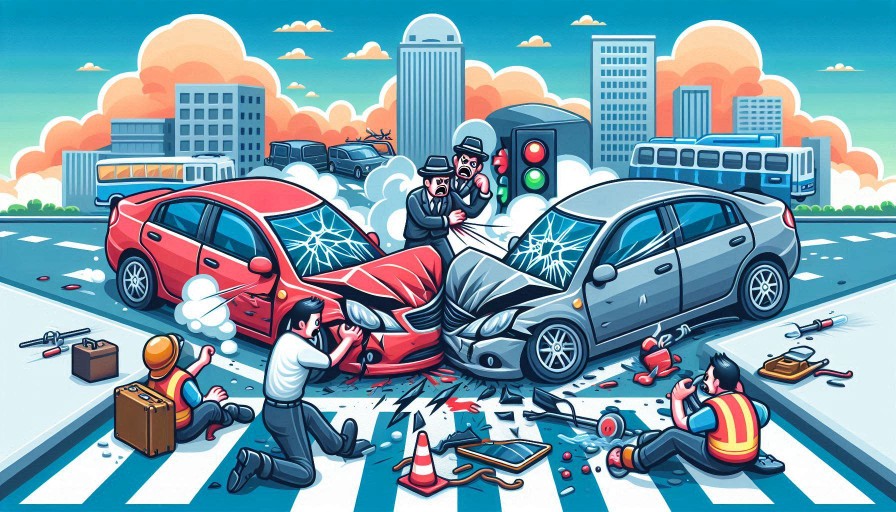What is Uninsured/Underinsured Motorist (UM/UIM) Coverage

If you are a driver, you probably know that you need car insurance to protect yourself and others in case of an accident. But what if the other driver involved in the accident has no insurance or not enough insurance to cover the damages? This is where uninsured/underinsured motorist (UM/UIM) coverage comes in handy. UM/UIM coverage is a type of car insurance that can pay for your medical expenses, lost wages, and pain and suffering if you are injured in an accident caused by a driver who is uninsured or underinsured. It can also pay for your property damage if you have uninsured motorist property damage (UMPD) coverage. In this article, we will explain what UM/UIM coverage is, how it works, why you need it, and how much it costs.
What is UM/UIM Coverage?
UM/UIM coverage is an optional car insurance coverage that can protect you from the financial consequences of being in an accident with a driver who has no insurance or not enough insurance to cover the damages. According to the Insurance Research Council, about 13% of drivers in the U.S. are uninsured, and many more are underinsured, meaning they have the minimum liability coverage required by law, but not enough to pay for the full extent of the damages they cause.
UM/UIM coverage has two components: uninsured motorist (UM) coverage and underinsured motorist (UIM) coverage. UM coverage pays for your injuries and property damage if the other driver has no insurance at all, or if the accident is a hit-and-run. UIM coverage pays for the difference between the other driver’s liability coverage and your UM/UIM coverage limits, if the other driver has some insurance, but not enough to cover the damages. For example, if the other driver has $25,000 in liability coverage, but the damages are $50,000, and you have $50,000 in UM/UIM coverage, your UIM coverage will pay the remaining $25,000.
UM/UIM coverage typically covers the following expenses:
- Medical bills
- Lost wages
- Pain and suffering
- Funeral costs
- Property damage (if you have UMPD coverage)
UM/UIM coverage does not cover the following expenses:
- UM/UIM coverage does not pay for the other driver’s damages or injuries, nor does it pay for your own damages or injuries if you are at fault in the accident.
- UM/UIM coverage does not pay for your injuries or property damage if the other driver has enough insurance to cover the damages
How Does UM/UIM Coverage Work?
UM/UIM coverage works similarly to liability coverage, except that it pays for your own damages, rather than the other driver’s. UM/UIM coverage has two types of limits: bodily injury and property damage. Bodily injury limits are the maximum amount that your UM/UIM coverage will pay for your injuries and those of your passengers. Property damage limits are the maximum amount that your UM/UIM coverage will pay for your vehicle and other property damage. UM/UIM coverage limits are usually expressed as three numbers, such as 25/50/25. This means that your UM/UIM coverage will pay up to $25,000 per person, $50,000 per accident for bodily injury, and $25,000 per accident for property damage.
UM/UIM coverage also has a deductible, which is the amount that you have to pay out of pocket before your UM/UIM coverage kicks in. The deductible amount varies depending on your policy and state, but it is usually lower than your collision or comprehensive deductible. For example, if your UM/UIM deductible is $250, and your damages are $10,000, you will have to pay $250, and your UM/UIM coverage will pay the remaining $9,750.
To use your UM/UIM coverage, you need to file a claim with your own insurance company, and provide them with the details of the accident, such as the police report, the other driver’s information and insurance details, and the evidence of your damages and injuries, such as your medical bills, repair estimates, and photos and that they were at fault in the accident. Your insurance company will then investigate the claim, and determine the amount of damages and the amount of coverage available. If the other driver has some insurance, your insurance company may also try to recover the money from their insurance company, in a process called subrogation. If the other driver has no insurance, or if their insurance company refuses to pay, your insurance company may sue them on your behalf, in a process called arbitration.
Why Do You Need UM/UIM Coverage?
UM/UIM coverage is not required by law in most states, but it is highly recommended by insurance experts and consumer advocates. UM/UIM coverage can provide you with financial protection and peace of mind in case you are involved in an accident with a driver who has no insurance or not enough insurance to cover the damages. Without UM/UIM coverage, you may have to pay for your own medical bills, lost wages, and pain and suffering, or sue the other driver for compensation, for example. According to the National Safety Council, the average economic cost of a nonfatal car crash injury in 2020 was $28,100, and the average economic cost of a fatal car crash injury was $1,652,000. So, as you can see, without UM/UIM coverage, you may have to pay for these costs out of your own pocket or sue the other driver for compensation, which can be time-consuming, costly, stressful, and uncertain. UM/UIM coverage can also protect you from hit-and-run drivers, who are considered uninsured for the purposes of UM coverage.
With UM/UIM coverage, you can also avoid being sued by the other driver, who may claim that you were partially or fully at fault in the accident and demand compensation from you.
UM/UIM coverage is especially important if you live in a state with a high percentage of uninsured or underinsured drivers, or if you have a high-value vehicle, a high income, or a high liability risk. According to the Insurance Information Institute, the states with the highest percentage of uninsured drivers in 2023 were Florida (26.7%), Mississippi (23.7%), New Mexico (20.8%), Michigan (20.3%), and Tennessee (20%). The states with the lowest minimum liability requirements in 2023 were Florida, California, Massachusetts, New Jersey, and Pennsylvania, with $5,000 or less in property damage liability.
How Much Does UM/UIM Coverage Cost?
The cost of UM/UIM coverage depends on several factors, such as your state, your insurance company, your policy, your coverage limits, your deductible, your vehicle, your driving record, and your credit score. According to the National Association of Insurance Commissioners, the average annual cost of UM/UIM coverage in the U.S. was $75.58 in 2023, which was about 5.6% of the average annual cost of car insurance ($1,348.72). However, the cost of UM/UIM coverage can vary significantly from state to state and from company to company. For example, the average annual cost of UM/UIM coverage in Maine was $22.04, while the average annual cost of UM/UIM coverage in New Jersey was $165.90.
To find out how much UM/UIM coverage costs for you, you can compare quotes from different insurance companies online, by phone, or in person. You can also use online tools, such as The Zebra or Compare the Market, to get free car insurance quotes from hundreds of trusted providers in minutes. You just need to enter some basic information about yourself, your car, and your driving habits, and you will see personalized quotes from different insurers.
Conclusion
UM/UIM coverage is a type of car insurance that can pay for your injuries and property damage if you are in an accident with a driver who is uninsured or underinsured. It is not required by law in most states, but it is highly recommended by insurance experts and consumer advocates. UM/UIM coverage can provide you with financial protection and peace of mind in case you are involved in an accident with a driver who has no insurance or not enough insurance to cover the damages.


0 Comments